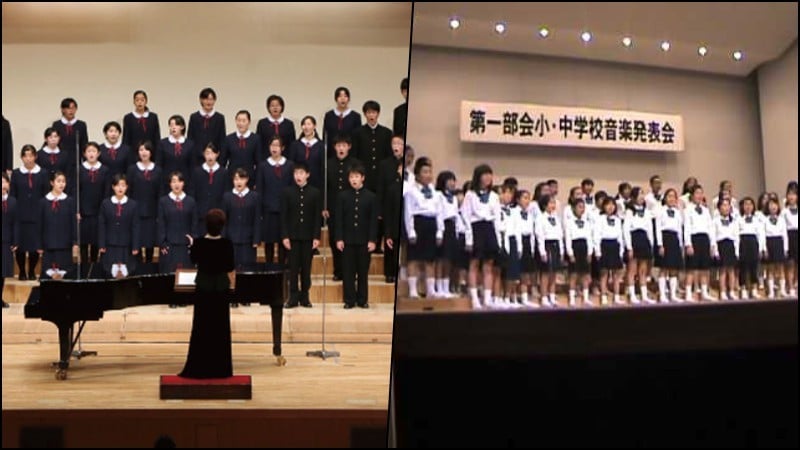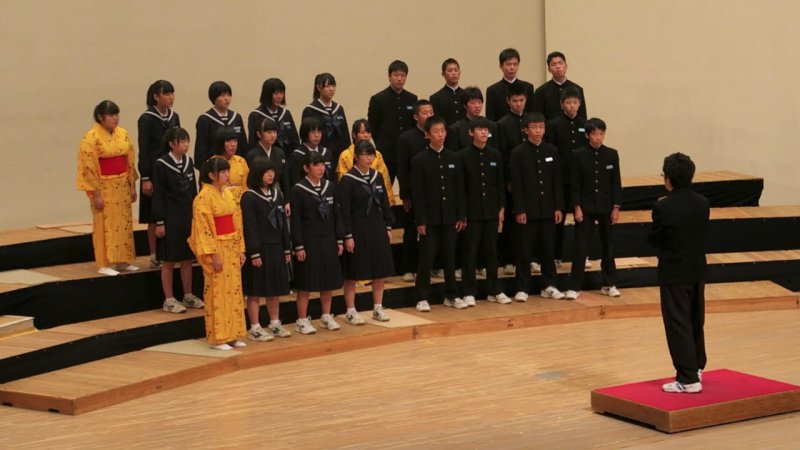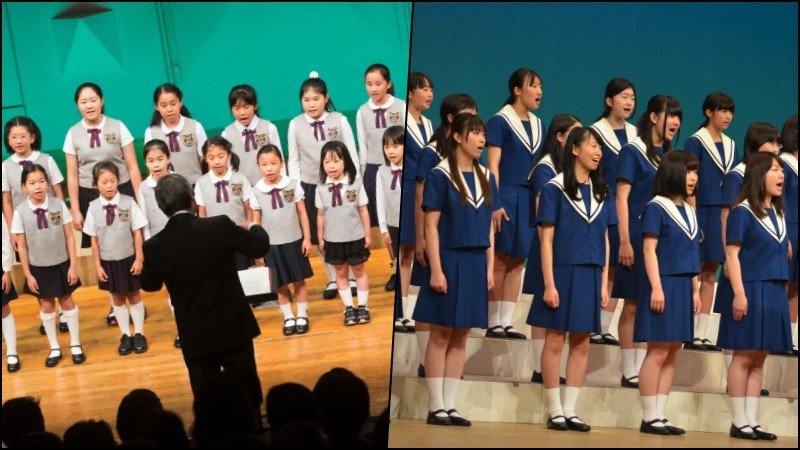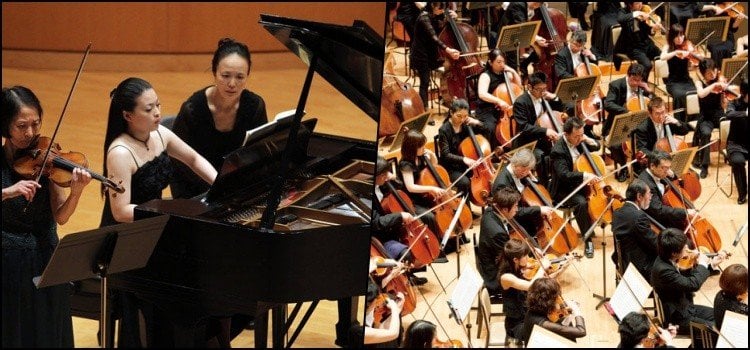In all Japanese schools, whether public or private, there is a choir annually where all students participate and sing, usually one song per class. In this article, we are going to talk a little about orchestras and choirs in Japanese schools.
Japanese schools are full of cultural activities with students such as artwork, research, choir performances, concerts, theater and others. Not to mention the school clubs that also cover these activities.
It is not necessary to be in a singing club or choir to participate in the choirs that usually take place in Japanese schools. All students in each class are encouraged and prepared months in advance to present a singing performance.

Maybe you've seen these situations in anime, where students prepare months in advance. There is usually a competition between classes and sometimes even interscholastic.
Every year, important national competitions are organized to choose the best orchestra or choir. This allows students to feel motivated in terms of practicing their singing or instrument in order to defend the honor of their school.
Choir groups in schools are called gasshoudan [合唱団]. In the West we have a strong connection to the choir in the churches, when the choir refers to something religious, it is called seikatai [聖歌隊].
Índice de Conteúdo
What are the benefits of the choir in Japanese schools?
Classical Japanese singing generally has a much more positive effect than popular songs among young people today. From an early age, Japanese children are encouraged to appreciate the true art of classical music and singing.

Music in Japanese schools is as important as mathematics. Since the Meiji era, the study of music in Japanese culture has become compulsory in primary and secondary education.
At just 6 years of age, Japanese children can already be encouraged to participate in a choir or learn a musical instrument. Children have at least an hour and a half of music lessons a week.
These orchestras and choirs also help students to have social interaction, they are encouraged to work as a group. They work together to create a performance as a whole, and are judged as a whole.

Students participate regardless of whether they like or know how to sing. All this work results in cooperation, teamwork and discipline. Skills that the Japanese took all their lives.
the voice of japan
In the past, there was a social and political movement that probably served as an influence for the popularization of choirs in schools. The “Voice of Japan” movement in Japanese nihon no utagoe -> Japanese singing voice [日本歌声].
This movement took an ideology of communism and democratic socialism, the movement provided musical and choir activities throughout Japan in factories, schools and residential areas focused on the working class.

The movement peaked in the 1950s to 1960s and had the support of Japanese singer Akiko Seki, considered the founder of the Voice of Japan movement. With growing capitalism taking over Japan, the movement's goal has lost its stamina but continues to promote choirs across the country.
Of course, the voice of Japan is not the only movement or group focused on holding school orchestra and choir events across Japan. In 1927 Kosuke Komatsu, who had returned from France, founded the “National Music Association” which later became the largest “Japanese Choir Association” in the country.
JCA is responsible for promoting the choir in Japan in elementary, middle and high schools, as well as factories, companies and private groups. There are believed to be over 30,000 coral bands scattered across Japan.
There is also the All-Japan Band Association, an organization responsible for band and orchestra competitions that take place across the country. It is estimated that there are over 14,000 AJBA school bands and orchestras.
Orchestras and choirs in schools in Japan
We have already noted the influence and importance of choirs and orchestras in Japanese culture. You are also already aware of how the Japanese appreciate this type of music and strive to spread this art in society.
There are many popular songs that are sung in choirs or orchestras, especially in Japanese school graduations. You must have heard the song "Tsubasa wo Kudasai" or "3gatsu 9ka" who played in the drama "A liter of tears".
In addition to these popular songs, we can list:
- "Sotsugyou Shashin" por Yumi Matsutoya
- "Okuru Kotoba (Presenting Word)" by Kaien-tai
- "Sakura (Cherry Blossom)" by Naotaro Moriyama
- Sorry, I can’t do that.
- "Tabidachi no hi ni (The Day of Departure)" é uma música de coro.
- “Sotsugyou” by Yutaka Ozaki;
- "Sakura (Cherry Blossom)" de Kobukuro
- “Michi” by EXILE
- “YELL” by Ikimono-Gakari
Choirs and orchestras in Japanese schools can take place at competitions, graduations, cultural events, school events and even outside schools. We noticed that the influence of choirs and orchestras is strong throughout Japan.
Even in J-POP songs or idols we can see great cooperation, classical instruments and group choir. It's interesting how popular music mixes with classical music and Japanese and Western choirs.
Have you ever had the chance to join a Japanese school choir? Do you have any curiosity or additional information to comment? We appreciate the comments and shares.




